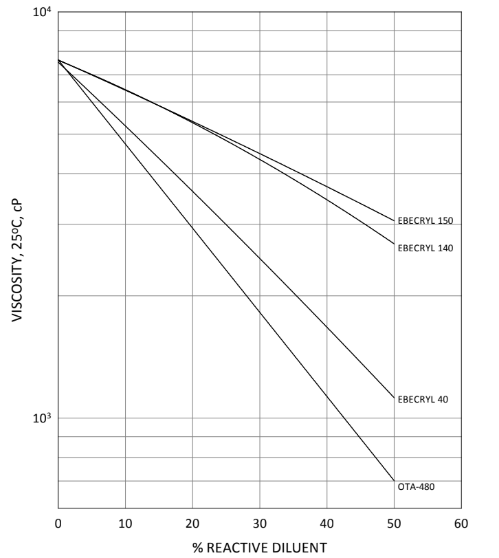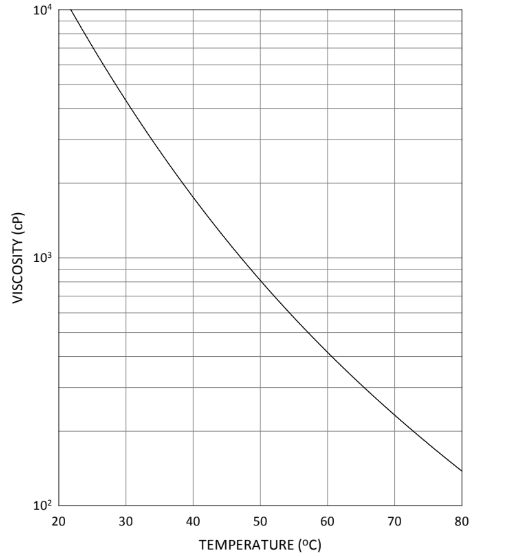Enhanced TDS
Identification & Functionality
- Blend
- No
- CASE Ingredients Functions
- Chemical Family
- Country of Origin
- Function
- Binder
- Product Code
- MITM00407
- Single Ingredient
- Yes
- Technologies
- Product Families
Features & Benefits
- CASE Ingredients Features
- Performance Highlights
EBECRYL®450 is characterized by:
- Rheology suited for lithographic inks
- Fast cure response
- Good pigment wetting
- Good lithographic behavior
UV/EB cured products containing EBECRYL®450 are characterized by the following performance properties:
- High abrasion resistance
- Good hardness
- Good solvent resistance
The actual properties of UV/EB cured products also depend on the selection of other formulation components such as reactive diluents, additives and photoinitiators.
Applications & Uses
- Application Method
- Coating End Applications
- Cure Method
- Ink & Toner End Applications
- Markets
- Applications
- Product Application
Formulated UV/EB curable products containing EBECRYL®450 may be applied via lithographic, screen or gravure printing, or direct or reverse roll and curtain coating methods. EBECRYL®450 is recommended for:
- Fast curing lithographic inks and clear varnishes
- Improving lithographic behavior as an additive
Properties
- Physical Form
Technical Details & Test Data
- Technical Data
TYPICAL TACK RANGES¹
Oligomer / Reactive diluent Tack, g-m EBECRYL®450 3-5 EBECRYL®450/ 5% OTA 480² 3-4 EBECRYL®450 / 10% OTA-480 2-3 EBECRYL®450 / 5% TPGDA² 3-4 EBECRYL®450 / 10% TPGDA 2-3 ¹ 400 RPM, 90°F, 3 minutes; Thwing-Albert Electronic Inkometer
² OTA-480 (propoxylated glycerol triacrylate) and TPGDA (tripropylene glycol diacrylate) are products of Allnex.
- Viscosity Reduction
GRAPH I:EBECRYL®450 - VISCOSITY REDUCTION WITH REACTIVE DILUENTS

GRAPH II:EBECRYL®450 - VISCOSITY VS. TEMPERATURE

- EBECRYL®450
- Graph I show the viscosity reduction of EBECRYL 450 with the reactive diluents EBECRYL 40(1), EBECRYL 140¹ (ditrimethylolpropane tetraacrylate), EBECRYL 150¹ (ethoxylated bisphenol A diacrylate), and OTA-480.
- Although viscosity reduction can be achieved with non-reactive solvents, reactive diluents are preferred because they are essentially 100 percent converted during UV/EB exposure to form a part of the coating or ink, thus avoiding solvent emissions.
- The specific reactive diluents used will influence performance properties such as hardness and flexibility.
- Graph II illustrates the change in viscosity of EBECRYL 450 with increasing temperature.
- ¹ Product of allnex
Packaging & Availability
Principal Information
- Group Principal Number
- S000001
- Principal
Storage & Handling
- Storage and Handling Conditions
- Care should be taken not to expose the product to high temperature conditions, direct sunlight, ignition sources, oxidizing agents, alkalis or acids.
- This might cause uncontrollable polymerization of the product with the generation of heat.
- Storage and handling should be in stainless steel, amber glass, amber polyethylene or baked phenolic lined containers.
- Procedures that remove or displace oxygen from the material should be avoided.
- Do not store this material under an oxygen free atmosphere.
- Dry air is recommended to displace material removed from the container.
- Wash thoroughly after handling.
- Keep container tightly closed.
- Use with adequate ventilation.
Other
- Appearance
- Clear liquid
- Appearance (SDS)
- Liquid
- Color (SDS)
- Dark amber
- Item Number
- Odor (SDS)
- Acrylate
- Other Hazards
- Polymerization may occur from excessive heat, contamination or exposure to direct sunlight .
- Protect from Freezing
- Yes
- Temperature Control
- Yes
- USA/DOT UN Number
- Not Applicable
- Chemical Properties
Value Units Test Method / Conditions Acid Value max. 20.0 mg KOH/g mg KOH/g Total Acidity max. 0.3 % % Acrylic Acid - Material Composition
Value Units Test Method / Conditions Polyol Content max. 20.0 %(W/W) %(W/W) as acrylated Residual Solvent Content max. 0.1 % % - Mechanical Properties
Value Units Test Method / Conditions Elongation at Break 4.0 % % UV cured, 125µm thick films Tensile Modulus 1034.0 MPa MPa at break, UV cured 125 μ thick films Tensile Modulus 150000.0 psi psi UV cured 125 µ thick films Tensile Strength 30.0 MPa MPa at break, UV cured 125 μ thick films Tensile Strength 4300.0 psi psi UV cured 125 µ thick films - Physical Properties
Value Units Test Method / Conditions Density 1.12 g/mL g/mL at 25°C Glass Transition Temperature (Tg) 17.0 °C °C Dynamic Mechanical Analysis (DMA) at break, UV cured 125 μ thick films Glass Transition Temperature (Tg) 17.0 °C °C Dynamic Mechanical Analysis (DMA) UV cured, 125μm thick films Storage Temperature 39.2-104.0 °F °F Viscosity 6000.0-9000.0 mPa.s mPa.s at 25°C - SDS Physical and Chemical Properties
Value Units Test Method / Conditions Boiling Point (SDS) min. 100.0 °C °C Density (SDS) 1.09 g/cm³ g/cm³ Vapor Pressure (SDS) 0.01 hPa hPa at 25°C Viscosity (SDS) 6000.0-9000.0 mPa.s mPa.s at 25°C, very viscous liquid Volatile Content (SDS) max. 0.5 % % - Shelf Life & Stability
Value Units Test Method / Conditions Shelf Life 0.0 d d
